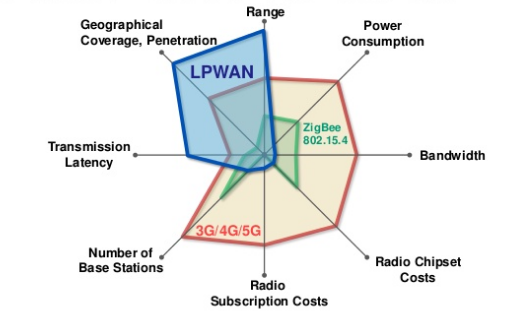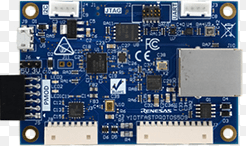Low Power Wide Area Networks (LPWAN)
Low Power Wide Area networks (LPWAN) could play an important role in connecting a range of devices that need to be low mobility, low power, and low cost. As part of the Internet of Things, these connections are likely to serve a diverse domain, such as automotive, utilities and health, and cover a range of applications and deployment scenarios in which mobile and short-range wireless network technologies may not be best placed to provide connectivity.
Recently, a new breed of LPWAN networks has emerged to fill the gap between local wireless and mobile wide area network technologies. These LPWAN networks possess several characteristics that make them particularly attractive for devices and applications that require low mobility and low levels of data transfer.
A requirement of Low Power Wide Area Networks (LPWAN)
- Low power consumption that enables devices to last up to 10 years on a single charge
- An optimized data transfer that supports small, intermittent blocks of data
- Low device unit cost that can be sub-$5 per module
- Less number of base stations required to provide coverage
- Easy installation of the network
- Dedicated network authentication
- Optimized for low throughput, long or short distance
- Sufficient indoor penetration and coverage
The ability of LPWAN networks to provide low cost, long battery life, and wide area network coverage could mean such networks potentially support up to 7.4 billion connections by 2020, according to a report by Machina Research. LPWAN networks could make it feasible for connectivity to be used in many more devices and scenarios, including security alarms, car park spaces, agricultural applications, such as monitoring the wetness and temperature of the soil, as well as smart metering, consumer electronics, and intelligent buildings.
Mobile operator support for LPWAN network technologies are largely complementary to the existing mobile networks, and their addition to mobile network operators’ (MNOs) infrastructure would have the number of benefits for MNOs as well as the wider ecosystem.
- The deployment of LPWAN networks in the licensed spectrum will enhance the security of the IoT applications using them
- Large scale deployment of LPWAN technologies to new types of customers will fuel growth in demand for many services that MNOs already provide, such as mediation, billing and customer support, authentication and security, device management and data analytics
LPWAN Technologies
LPWAN technologies are available to support both licensed and unlicensed spectrum and few of them are list below
- Long Term Evolution for Machine Type Commutation (LTE-M)
- SigFox (SigFox)
- Long Range (LoRa)
- Narrow Band IoT (NB-IoT)



